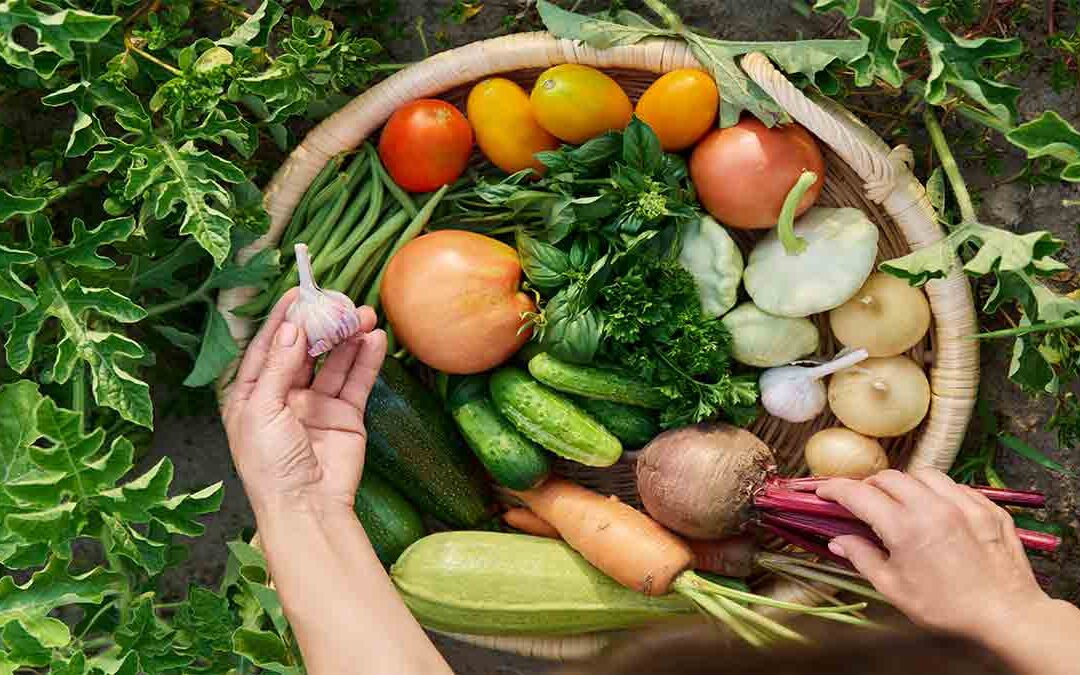Fresh vegetables are the cornerstone of a healthy and delicious diet, bursting with essential nutrients and vibrant flavors. But with so many choices at the grocery store or farmer’s market, how can you select the freshest vegetables possible? While there are general tips for choosing quality produce, each vegetable has its unique telltale signs.
We’ll delve into the fascinating world of sensory shopping, telling you how to use your sight, touch, smell, sound, and even taste to pick the perfect vegetables every time. Whether you’re a seasoned home cook or just starting your culinary journey, these tips will empower you to make informed choices and elevate your dishes with the freshest ingredients. Get ready to discover how your senses can be your most valuable tools in the quest for optimal nutrition and flavor.
Sight – The First Indicator of Freshness
Your eyes are your first line of defense in the quest for the freshest vegetables. A quick visual inspection can reveal a wealth of information about a vegetable’s quality and how long it’s been since it was harvested.
Color: Nature’s Palette of Freshness
Vibrant Hues: Look for vegetables that showcase their characteristic colors in full glory. Think deep green spinach, ruby red tomatoes, and sunshine-yellow corn.
Dullness as a Red Flag: Faded or dull colors often suggest age or improper storage. A once-bright bell pepper that’s now lackluster or a pale green cucumber are signs to move on.
Color-Specific Tips:
Leafy Greens: Seek out rich, deep greens. Avoid those with yellowing or browning leaves.
-
- Root Vegetables: Look for vibrant colors specific to the type – bright orange for carrots, deep red for beets.
- Fruits masquerading as Vegetables: (Tomatoes, Peppers, etc.) These should boast their signature colors without any dull or pale patches
Surface & Shape: Signs of Health
- Smooth & Unblemished: For root vegetables like potatoes and carrots, as well as fruits like tomatoes and peppers, a smooth, unblemished skin indicates freshness. Avoid those with cuts, bruises, or punctures which can lead to faster spoilage.
- Uniformity: Vegetables that are uniform in size and shape often indicate healthy growth and harvesting at the right time. While some variation is natural, overly large or misshapen vegetables may be past their prime or have quality issues.
- Specific Checks:
- Potatoes: Look for firm potatoes without any sprouts or green patches (which can indicate solanine, a toxic compound).
- Onions & Garlic: Choose those with dry, papery outer skins and no signs of sprouting.
Leaf Quality: Crisp & Vibrant
- Leafy Greens: Whether it’s spinach, lettuce, or kale, the leaves should be crisp, vibrant, and free of wilting or browning edges. Avoid those with slimy or discolored patches.
- Herbs: Look for perky, fragrant leaves. Avoid those that look wilted, yellowed, or have black spots.
Beyond the Basics: More Visual Cues
- Stems and Leaves: The stems and leaves attached to vegetables should also look fresh and healthy. Look for vibrant green stems and leaves, avoiding those that are wilted, yellowing, or damaged.
- Flowers and Buds: In vegetables like broccoli and cauliflower, the florets (flowers) or buds should be tight and compact. Avoid those with yellowing or browning, which indicate they are past their prime.
- Moisture Levels: A little moisture is natural, but excessive wetness or sliminess can indicate spoilage or improper handling. Choose vegetables that are dry to the touch but not shriveled.
Remember: By paying close attention to visual cues, you can significantly increase your chances of selecting the freshest, most flavorful vegetables, ensuring that your meals are both nutritious and delicious!
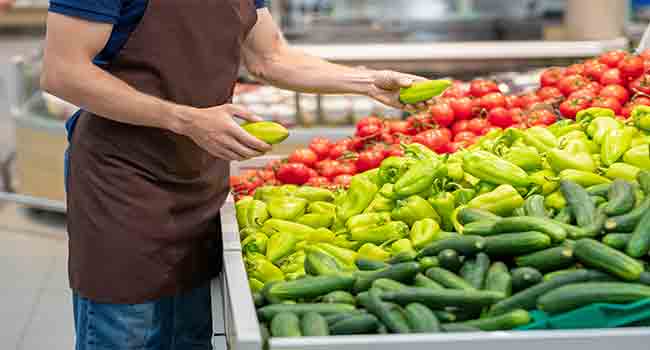
Touch – The Texture Tells a Story
Your sense of touch can be a powerful tool in your quest for the freshest vegetables. The right texture can tell you a lot about the vegetable’s quality and how long it’s been since it was harvested. So, don’t be shy about giving those veggies a gentle squeeze!
Firmness: A Sign of Vitality
- Cucumbers, peppers, and zucchini should feel firm and spring back slightly when gently pressed. Imagine a ripe, juicy cucumber yielding just a bit under your fingers, then bouncing back into shape – that’s the sign of freshness you’re looking for. Avoid those that feel soft, mushy, or overly pliable, as they’re likely past their prime.
-
- Carrots, potatoes, and beets should be firm and solid to the touch, without any soft spots or give. A firm texture indicates good moisture content and a recently harvested vegetable. If they feel spongy or have noticeable soft areas, it’s best to pass them by.
Crispness in Vegetables:
- Weight: The Heavier, the Better (Usually!)
- A heavy head of cabbage feels dense and packed with goodness, while a light one might be dried out and less flavorful.
- Similarly, a weighty lettuce feels substantial and crisp, while a light one may be wilted and past its prime.
- When choosing melons, go for the heavier option – it’s more likely to be juicy and ripe.
- Heaviness vs. Lightness: In general, a heavier vegetable for its size is a good sign. This suggests a higher water content, which often translates to freshness, juiciness, and better flavor.
Examples:
- Surface Texture: Smooth Sailing
- Smooth vs. Wrinkled: Wrinkles, soft spots, or blemishes on the surface can be signs of age, damage, or improper storage. Look for vegetables with smooth, unblemished skin.
- Think of it this way: A smooth, taut pepper is like a freshly inflated balloon, full of flavor and nutrients, whereas a wrinkled one is like a deflated balloon, past its prime.
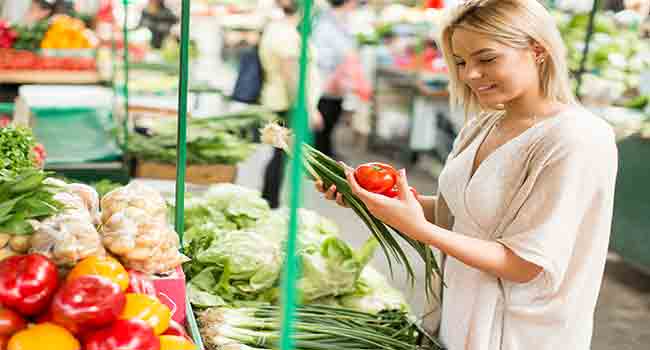
Smell – The Aroma of Freshness
The aroma of a vegetable can tell you a lot about its freshness and quality. Take a moment to sniff your produce before you buy – your nose can be a surprisingly powerful tool in selecting the best!
Fragrance: Nature’s Perfume
-
- Sweet and Earthy Scents: Many fresh vegetables have a subtle, pleasant aroma that’s characteristic of their type. Tomatoes should have a fresh, earthy scent, while bell peppers might offer a hint of sweetness.
- Warning Signs: Avoid vegetables with a musty, sour, or off-putting smell. These are telltale signs of spoilage or decay and mean the vegetable is past its prime and should be avoided.
Specific Vegetable Aromas: Sniffing Out the Best
-
-
- Herbs: Fresh herbs like basil and cilantro should have a strong, fragrant aroma that’s almost intoxicating. If the scent is weak or absent, the herbs may be past their prime and won’t add much flavor to your dishes.
- Onions and Garlic: A pungent, sharp smell is a good sign for onions and garlic. It indicates they are fresh and have been stored properly. Avoid those with a soft or moldy smell.
-
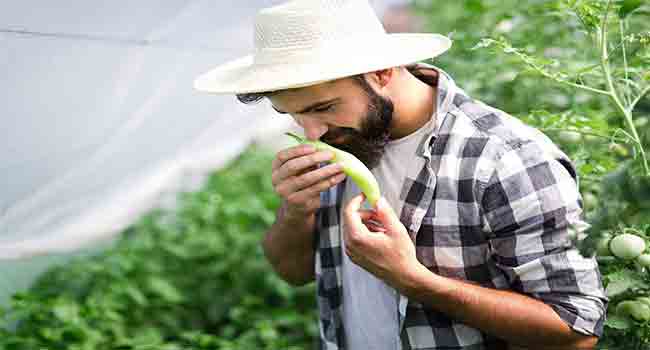
Sound – Listening for Freshness
While it might seem unconventional, your sense of hearing can be a surprisingly useful tool in your quest for the freshest vegetables. Think of it as nature’s subtle soundtrack, guiding you towards the most vibrant and flavorful produce.
Crispness: The Sound of Freshness
-
- Snap Test: Imagine the satisfying crack of a fresh green bean or the crisp snap of a carrot stick – these sounds are music to a produce lover’s ears! They signify freshness, juiciness, and optimal texture. If a vegetable that should snap or break cleanly instead bends or produces a dull thud, it’s likely past its prime.
- Hollow Sounds: When choosing melons, give them a gentle tap. A resonant, hollow sound indicates a ripe and juicy fruit, ready to be enjoyed. A dull thud, on the other hand, might suggest an unripe or overripe melon. Think of it as a drum – a hollow drum produces a clear, vibrant sound, while a full one sounds muffled.
Silence as a Warning
-
- Dullness and Softness: If a vegetable that should be crisp and snappy remains silent when tested, it’s a red flag. This lack of sound can indicate staleness, a loss of moisture, or poor quality.
Taste – The Ultimate Test (Caution advised – not applicable in all situations)
While not always feasible, tasting a vegetable is the ultimate confirmation of its freshness and flavor. It’s like a sneak peek into the deliciousness that awaits! If you’re lucky enough to be at a farmer’s market or a store that allows sampling, take advantage of this opportunity to let your taste buds guide you.
Sampling When Possible
-
- Markets and Farmer’s Stalls: Many farmers’ markets and some grocery stores offer samples of their produce. This is a fantastic way to experience the flavor firsthand and make informed choices. Don’t hesitate to ask for a taste – it’s the best way to ensure you’re getting exactly what you want.
Flavor Indicators
-
- Sweetness in Corn: Fresh corn kernels should burst with natural sweetness, like tiny drops of sunshine. If the kernels taste starchy or bland, the corn might be old or not properly stored.
- Bitterness in Greens: Some leafy greens, like kale or arugula, have a naturally slightly bitter flavor that adds complexity to dishes. However, an intense or overwhelming bitterness can indicate that the greens are past their prime or have been stressed during growth.
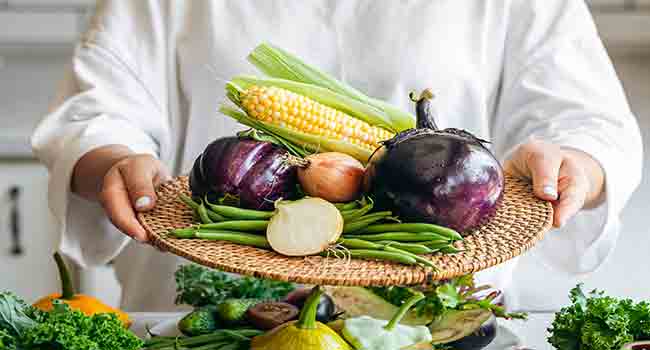
Integrating All Senses – A Holistic Approach
The most effective way to choose the freshest vegetables is to engage all of your senses. Think of it as a symphony of freshness, where each sense plays a crucial role in helping you select the best produce.
How to Combine Your Senses:
-
- Start with Sight: Feast your eyes on the vibrant colors, smooth surfaces, and crisp leaves.
- Feel for Firmness: Gently squeeze or press the vegetables to assess their texture. Are they firm and resilient, or soft and yielding?
- Take a Whiff: Inhale the aroma and look for fresh, earthy scents. Avoid any unpleasant odors that might signal spoilage.
- Listen for Crispness: Snap or tap certain vegetables to gauge their freshness. A crisp snap is a good sign, while a dull thud might indicate staleness.
- Taste When Possible: Sample vegetables at markets or stores to experience their flavor firsthand. This is the ultimate test of freshness and quality.
By combining all of your senses, you’ll become a discerning produce shopper, able to confidently select the freshest, most flavorful vegetables every time. Your meals will be more vibrant, nutritious, and delicious, and you’ll be well on your way to a healthier, happier you!
Beyond the Senses: Extra Tips for Choosing the Freshest Vegetables
While your senses are your primary tools, these extra tips can help you elevate your vegetable-picking game:
Embrace Seasonality: Nature’s Best Timing
Vegetables are at their peak flavor and nutritional value when they’re in season. Think juicy, sun-kissed tomatoes in summer or hearty, earthy root vegetables in fall.
Buying in season not only means better taste but also supports sustainable farming practices and often translates to lower prices.
Buy Smart, Buy Small:
Resist the urge to overstock. Smaller, more frequent purchases ensure you’re using your vegetables at their peak freshness and reduce food waste.
This is especially true for delicate greens or herbs that tend to wilt quickly.
Store with Care: Prolonging Freshness
Proper storage is vital to preserving your vegetables’ quality. Do a bit of research to learn the best practices for each type.
For example, leafy greens like spinach thrive in a perforated bag in the fridge’s crisper drawer, while tomatoes should be stored at room temperature away from direct sunlight.
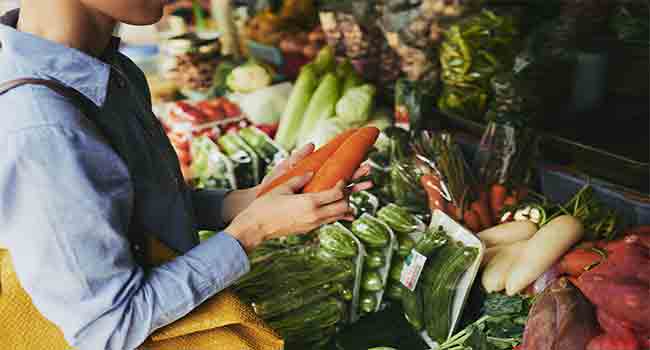
Your Questions About Selecting Fresh Produce
Q1: Can I always rely on the “best by” or “sell-by” dates on packaged vegetables?
- A: While these dates can be helpful indicators, they don’t always tell the whole story. Use your senses in conjunction with these dates to make the best decision. A vegetable might still be perfectly fresh a few days after the “sell-by” date, especially if stored correctly.
Q2: Are organic vegetables always fresher and better tasting?
- A: Organic vegetables are grown without synthetic pesticides and fertilizers, which can be beneficial for health and the environment. However, freshness and taste depend on various factors like variety, growing conditions, and handling. Organic or not, always prioritize your senses when selecting vegetables.
Q3: How can I tell if pre-cut or packaged vegetables are fresh?
- A: Pre-cut vegetables are convenient but can deteriorate faster. Look for bright colors, crispness (if applicable), and no signs of sliminess or discoloration. Check the packaging date and use-by date, and choose containers that are cold and well-sealed.
Q4: What are some common signs of spoilage in vegetables?
- A: Look out for:
- Mold: Fuzzy or discolored patches indicate mold growth.
- Soft Spots: Mushy or overly soft areas suggest decay.
- Off Odors: Unpleasant, sour, or fermented smells are signs of spoilage.
- Discoloration: Yellowing, browning, or black spots can signal age or damage.
Q5: Is it safe to eat vegetables that have slight blemishes or imperfections?
- A: In most cases, minor blemishes or imperfections are merely cosmetic and don’t affect the vegetable’s safety or taste. Simply cut away the affected part before consuming. However, avoid vegetables with extensive damage or signs of decay.
Q6: Can I revive wilted vegetables?
- A: Sometimes! Submerge wilted leafy greens or herbs in ice-cold water for a few minutes to help them regain some crispness. However, if the vegetables are severely wilted or discolored, it’s best to discard them.
Q7: How can I ensure my vegetables stay fresh longer at home?
- A: Proper storage is key! Learn the specific storage requirements for each type of vegetable. Some tips:
- Store leafy greens in perforated bags in the fridge’s crisper drawer.
- Keep root vegetables in a cool, dark place.
- Store tomatoes and avocados at room temperature until ripe, then refrigerate.
Q8: What if I’m still unsure about a vegetable’s freshness?
- A: Don’t be afraid to ask! The produce staff at your grocery store or farmer’s market can be a valuable resource. They can answer your questions and offer guidance on selecting the best produce.
Remember: When in doubt, trust your senses! If something doesn’t look, feel, or smell right, it’s probably best to pass it up.
Conclusion: Empower Your Senses, Elevate Your Meals
Choosing the freshest vegetables doesn’t have to be a daunting task. By harnessing the power of your senses and following these expert tips, you can confidently select produce that’s bursting with flavor and nutrients. Remember, the freshest vegetables not only taste better but also contribute to a healthier and more vibrant you. So, the next time you’re at the grocery store or farmer’s market, let your senses guide you towards the best of the season’s bounty. Happy shopping, and even happier eating!
Read More

